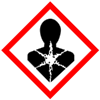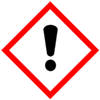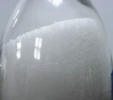Phthalic Anhydride SDS MSDS Sheet |
| Mubychem Limited of USA & India is a pioneer manufacturers suppliers exporters & importers of chemicals including Hydraulic fracturing stimulation & oil well production chemicals, Pharmaceutical excipients, Fragrance & flavor chemicals. Muby Chem Ltd has several manufacturing facilities and toll manufacturers across the globe. We have offices warehouses and representatives in Houston & Midland Texas and Chicago Illinois USA. |
| Our suppliers have accreditations like FDA - GMP-GLP approval, ISO-9001, ISO-22000 HACCP, Kosher & Halal Certification. We offer Commercial Pure Pharmacopoeia Analytical Reagent & Food Grade of Chemicals and do Toll Manufacturing for Oil well drilling fracking fracturing and others. |
Phthalic Anhydride Specifications of Supplier
Phthalic Anhydride SDS MSDS Sheet, Material Safety Data Sheet
1. Product Identification
Synonyms: 1,3-Isobenzofurandione; 1, 2-benzenedicarboxylic acid
anhydride; 1, 3-dioxophthalan.
CAS No.: 85-44-9
Molecular Formula: C8H4O3
Molecular Weight: 148.13
2. Hazards Identification
GHS, Globally Harmonized System Classification in accordance with 29 CFR 1910


Signal Words: Warning
Hazard statements:
H302: Harmful if swallowed.
H315: Causes Skin Irritation.
H317: May cause an allergic skin reaction.
H318: Causes serious eye damage
H335: May cause respiratory irritation
Precautionary statements:
P260: Do not breathe dust/fume/gas/mist/vapours/spray.
P264 Wash thoroughly after handling.
P270: Do not eat, drink or smoke when using this product.
P271: Use only outdoors or in a well-ventilated area.
P272: Contaminated work clothing should not be allowed out of the workplace.
P280: Wear protective gloves/protective clothing/eye protection/face
protection.
P285: In case of inadequate ventilation wear respiratory protection.
P314: Get medical advice/attention if you feel unwell.
P301+P312: IF SWALLOWED: Call a POISON CENTER or doctor/ physician if you
feel unwell.
P302+P352: IF ON SKIN: Wash with plenty of soap and water.
P304+P340: IF INHALED: Remove victim to fresh air and keep at rest in a
position comfortable for breathing.
P305+P351+P338: IF IN EYES: Rinse cautiously with water for several minutes.
Remove contact lenses, if present and easy to do. Continue rinsing.
P332 + P313: If skin irritation occurs: Get medical advice/attention.
P337+P313: If eye irritation persists: Get medical advice / attention.
P501: Dispose of contents/container in accordance with
local/regional/national/international regulation.
3. Composition/Information on Ingredients
Ingredient: Phthalic Anhydride
(contains less than 0.05 percent maleic anhydride or maleic acid).
CAS No.: 85-44-9
4. First Aid Measures
Always seek medical advise after the first aid measures.
Inhalation: If Phthalic Anhydride is inhaled, remove to fresh air.
If not breathing, give artificial respiration. If breathing is difficult,
give oxygen and get medical attention immediately.
Ingestion: Do not induce vomiting unless as directed by medical
personnel. Never give anything by mouth to an unconscious person. Get
medical attention.
Skin Contact: Immediately flush skin with plenty of water for at
least 15 minutes while removing contaminated clothing and shoes. Get medical
attention. Wash clothing and shoes before reuse.
Eye Contact: Remove contact lenses. Immediately flush eyes with plenty
of water for at least 15 minutes, lifting lower and upper eyelids
occasionally. Get medical attention immediately.
Notes to Physician: Treat symptomatically and supportively.
5. Fire Fighting Measures
Fire: As with most organic solids, fire is possible at elevated
temperatures or by contact with an ignition source.
Auto-Ignition Temperature: 570°C (1058°F)
Flash Points: CLOSED CUP: 151.67°C (305°F). OPEN CUP: 165°C (329°F).
Flammable Limits: LOWER: 1.7% UPPER: 10.4%
Explosion: Fine dust dispersed in air in sufficient concentrations,
and in the presence of an ignition source is a potential dust explosion
hazard.
Fire Extinguishing Media: Water spray, dry chemical, alcohol
foam, fog or carbon dioxide.
Products of Combustion: These products are fumes and carbon oxides
(CO, CO2).
Special Information: In the event of a fire, wear full protective
clothing and NIOSH-approved self-contained breathing apparatus with full
face piece operated in the pressure demand or other positive pressure mode.
6. Accidental Release Measures
Small Spill: Use appropriate tools to put the spilled solid
in a convenient waste disposal container.
Large Spill: Corrosive solid. Poisonous solid. Stop leak if
without risk. Do not get water inside container. Do not touch spilled
material. Use water spray to reduce vapors. Prevent entry into sewers,
basements or confined areas; dike if needed. Eliminate all ignition sources.
7. Handling and Storage
Keep Phthalic Anhydride in a tightly closed container, stored in a cool, dry, ventilated area. Protect against physical damage. Isolate from incompatible substances. Containers of Phthalic Anhydride may be hazardous when empty since they retain product residues (dust, solids); observe all warnings and precautions listed for the product. Avoid dust formation and control ignition sources. Employ grounding, venting and explosion relief provisions in accord with accepted engineering practices in any process capable of generating dust and/or static electricity. Empty only into inert or non-flammable atmosphere. Emptying contents into a non-inert atmosphere where flammable vapors may be present could cause a flash fire or explosion due to electrostatic discharge.
8. Exposure Controls/Personal Protection
Airborne Exposure Limits:
OSHA (USA): 2 ppm TWA; 12 mg/m3 TWA
ACGIH: 1 ppm TWA
NIOSH: 1 ppm TWA; 6 mg/m3 TWA
Ventilation System: A system of local and/or general exhaust is
recommended to keep employee exposures as low as possible. Local exhaust
ventilation is generally preferred because it can control the emissions of
the contaminant at its source, preventing dispersion of it into the general
work area. Please refer to the ACGIH document, Industrial Ventilation, A
Manual of Recommended Practices, most recent edition, for details.
Personal Respirators (NIOSH Approved): For conditions of use where
exposure to dust or mist is apparent and engineering controls are not
feasible, a particulate respirator (NIOSH type N95 or better filters) may be
worn. If oil particles (e.g. lubricants, cutting fluids, glycerin, etc.) are
present, use a NIOSH type R or P filter. For emergencies or instances where
the exposure levels are not known, use a full-face positive-pressure,
air-supplied respirator. WARNING: Air-purifying respirators do not protect
workers in oxygen-deficient atmospheres.
Skin Protection: Wear impervious protective clothing, including
boots, gloves, lab coat, apron or coveralls, as appropriate, to prevent skin
contact.
Eye Protection: Use chemical safety goggles and/or full face shield
where dusting or splashing of solutions is possible. Maintain eye wash
fountain and quick-drench facilities in work area.
9. Physical and Chemical Properties
Appearance: Phthalic Anhydride is white to off-white flakes,
granules, crystals, powder.
Odor: Faint odor.
Solubility: Slightly soluble in water.
Density: 1.590 @ 20C/4C
pH: -.
% Volatiles by volume @ 21C (70F): 0
Boiling Point: 284-286C.
Melting Point: It is melting at 130-133C.
Vapor Density (Air=1): 5.7
Vapor Pressure (mm Hg): No information found.
Molecular Weight: 148.13
Molecular Formula: C8H4O3
10. Stability and Reactivity
Stability: Phthalic Anhydride is stable under ordinary conditions
of use and storage.
Hazardous Decomposition Products: Fumes with Carbon dioxide and
carbon monoxide may form when heated to decomposition.
Hazardous Polymerization: Will not occur.
Incompatibilities: Heat, Strong oxidizers, sodium nitrate, sodium
nitrite, nitric acid.
Conditions to Avoid: Heat, dusting and incompatibles.
11. Toxicological Information
Oral, rat: LD50 = 1530 mg/kg;
Inhalation, rat: LC50 = >210 mg/m3/1H;
Oral, mouse: LD50 = 1500 mg/kg;
Skin, rabbit: LD50 = >10 gm/kg;
ACGIH: A4 - Not Classifiable as a Human Carcinogen
Epidemiology: No information available.
Teratogenicity: No information available.
Reproductive Effects: No information available.
Neurotoxicity: No information available.
Mutagenicity: No information available.
12. Ecological Information
Environmental Fate: Sufficient information is not available. When
released into the soil, Phthalic Anhydride is expected to leach into
groundwater. When released into the soil, this material is expected to
biodegrade. When released into water, this material is expected to
biodegrade. This material is not expected to significantly bio accumulate.
Environmental Toxicity:
No information found.
13. Disposal Considerations
Whatever cannot be saved for recovery or recycling should be managed in an appropriate and approved waste disposal facility. Processing, use or contamination of this product may change the waste management options. State and local disposal regulations may differ from federal disposal regulations. Dispose of container and unused Phthalic Anhydride in accordance with legal requirements.
14. Transport Information
The product is no dangerous good in terms of the ADR/RID according
to EU regulations or directives and the Austrian „Gefahrgutbeförderungsgesetz”.
Contents of maleic anhydride or maleic acid below 0,05 % (w/w).
US DOT has Phthalic anhydride not classified as Class 8 Corrosive, if
it contains not more than 0.05 percent maleic anhydride. Our product does
not contain less than 0.05 percent maleic anhydride.
Land Transportation (ADR/RID) / Inland Waterway Transport (AND(R))
UN number: Not regulated as a hazardous material
Proper shipping name: PHTHALIC ANHYDRIDE
Marine Transport (IMDG)
UN number: Not regulated as a hazardous material
Proper shipping name: PHTHALIC ANHYDRIDE
Environmental Hazard: No
Air Transport (ICAO/IATA)
UN number: Not regulated as a hazardous material
Proper shipping name: PHTHALIC ANHYDRIDE
15. Regulatory Information
OSHA: Hazardous by definition of Hazard Communication Standard (29 CFR 1910.1200).
SARA
Section 302 (RQ)
CAS# 85-44-9: final RQ = 5000 pounds (2270 kg)
Section 302 (TPQ)
None of the chemicals in this product have a TPQ.
SARA Codes
CAS # 85-44-9: acute, chronic, reactive.
Section 313
This material contains Phthalic Anhydride (CAS# 85-44-9, 99%),which is
subject to the reporting requirements of Section 313 of SARA Title III and
40 CFR Part 373.
Clean Air Act:
CAS# 85-44-9 is listed as a hazardous air pollutant (HAP). This material
does not contain any Class 1 Ozone depletors. This material does not contain
any Class 2 Ozone depletors.
Clean Water Act:
None of the chemicals in this product are listed as Hazardous Substances
under the CWA. None of the chemicals in this product are listed as Priority
Pollutants under the CWA. None of the chemicals in this product are listed
as Toxic Pollutants under the CWA.
None of the chemicals in this product are considered highly hazardous by
OSHA.
California No Significant Risk Level: None of the chemicals in this product
are listed.
WHMIS (Canada): CLASS D-2A: Material causing other toxic effects
(VERY TOXIC). CLASS E: Corrosive solid.
CAS# 85-44-9 is listed on Canada's DSL List. CAS# 85-44-9 is listed on
Canada's DSL List.
CAS# 85-44-9 is listed on Canada's Ingredient Disclosure List.
16. Other Information
Disclaimer:
***********************************
Our company provides this Phthalic Anhydride MSDS information sheet contained herein in good faith but makes no representation as to its comprehensiveness or
accuracy. This Phthalic Anhydride SDS sheet is intended only as a guide to the appropriate precautionary handling of the material by a properly trained person using this
product. Individuals receiving the information must exercise their independent judgment in determining its appropriateness for a particular purpose.
***********************************
Suppliers Manufacturers Exporters Importers between USA Canada UAE Europe South Africa Tanzania Kenya Uganda Egypt Nigeria Turkey Mexico Brazil Argentina Chile Dubai China India etc.
Copyright and Usual Disclaimer is Applicable.
If you feed a dog with your hand, it will never bite you. That is the principal difference between a dog and a man.







